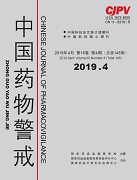|
|
Literature Analysis of Present Situation and Reporting Quality in TCM Safety Systematic Reviews Based on PRISMA Harms Checklist
HU Ruixue, WEN Lingzi, YU Mingkun, REN Yiming, CAO Huijuan, GAO Jiaqi, LIU Kexin, ZHAO Luming, LI Yilin, LIN Ziyi, ZHANG Zixuan, MING Yang, WU Xuecen, LI Xun, LIU Jianping, FEI Yutong
2019, 16(4):
231-238.
Objective To understand the present situation and reporting quality of traditional Chinese medicine (TCM) safety systematic reviews, strengthen the safety awareness of TCM and improve reporting quality of TCM safety systematic reviews. Methods Three Chinese electronic databases, including CNKI, WanFang and VIP were searched from inception to October 2018. The TCM safety systematic reviews were identified and the PRISMA Harms checklist (including 27 items) was used to assess the reporting quality. Results 116 papers were finally included. The number of TCM safety systematic reviews published are little whose number ranging from 2000 to 2018 is gradually increasing annually. 69 studies (59.48%) use oral traditional Chinese medicine and 20 studies (17.24%) use TCM injection as intervention respectively. And 14 studies (12.07%) focus on cardiovascular and cerebrovascular diseases respectively. The literature type was mainly randomized controlled trials (63.79%). The quality assessment of literature mainly uses the Cochrane Collaboration's tool for assessing risk of bias (57.76%). The 27 reporting items of PRISMA Harms checklist only has two studies including more than 25 items. Conclusion The number of published TCM safety reviews is small, but the trend is increasing annually. Although most of the PRISMA Harms items were reported in the TCM safety systematic reviews we included, the overall reporting quality needs to be improved. Attention needs to be paid to the standard reporting of the contents of TCM safety systematic reviews, to enable readers to capture and understand the review results transparently. It is also recommended that the journals adopt PRISMA Harms when publishing papers to improve the reporting quality of reviews.
References |
Related Articles |
Metrics
|
